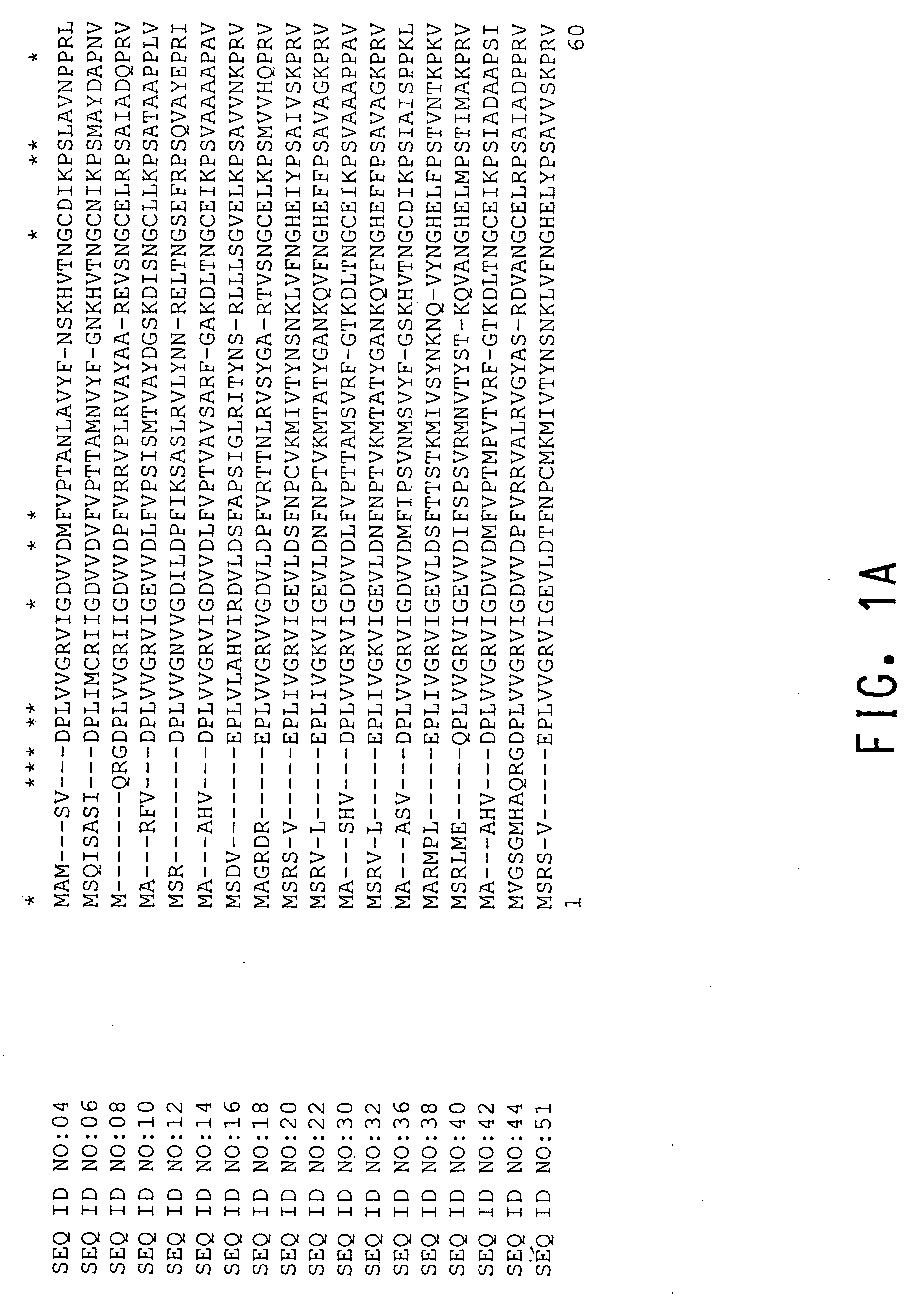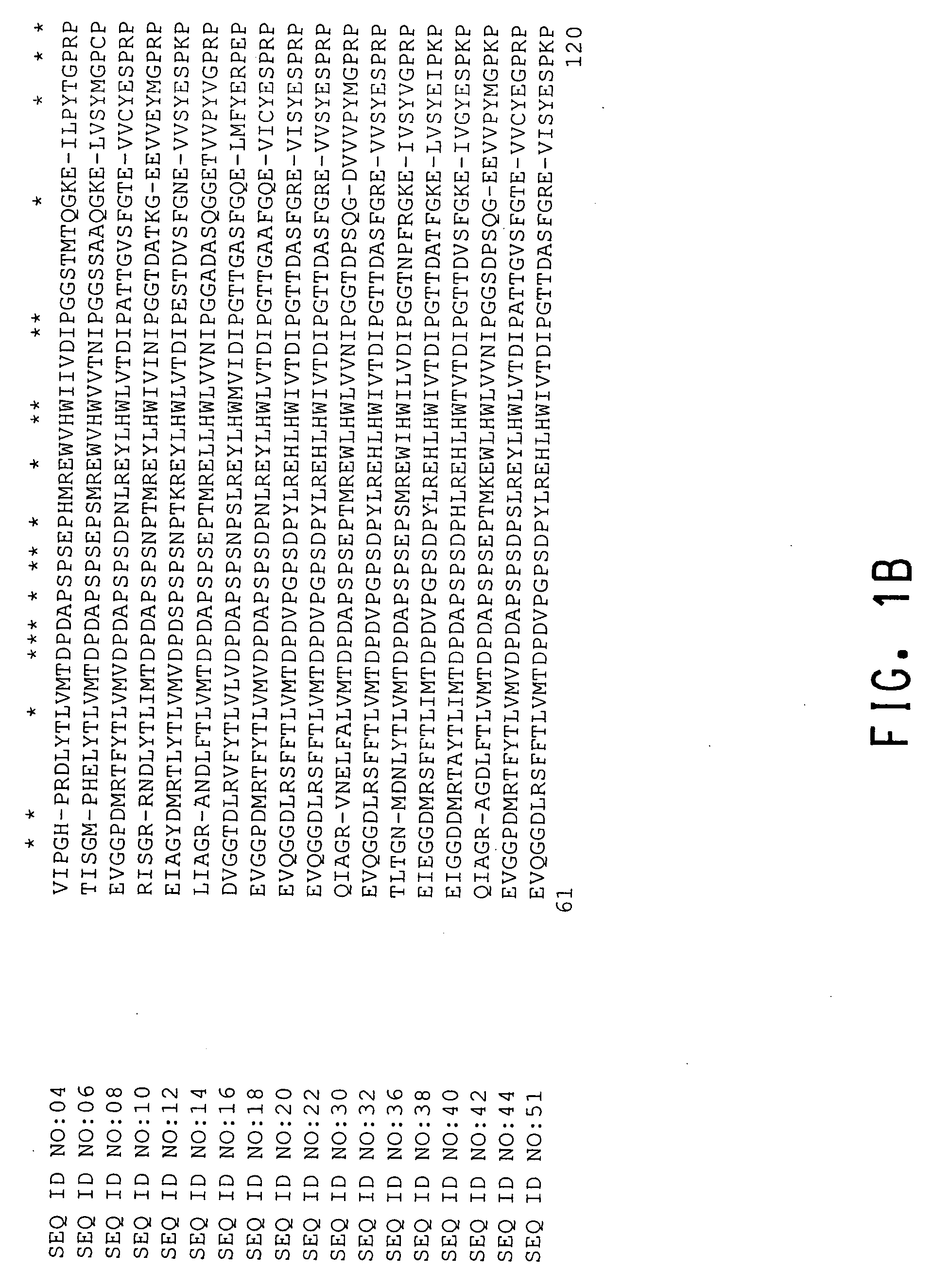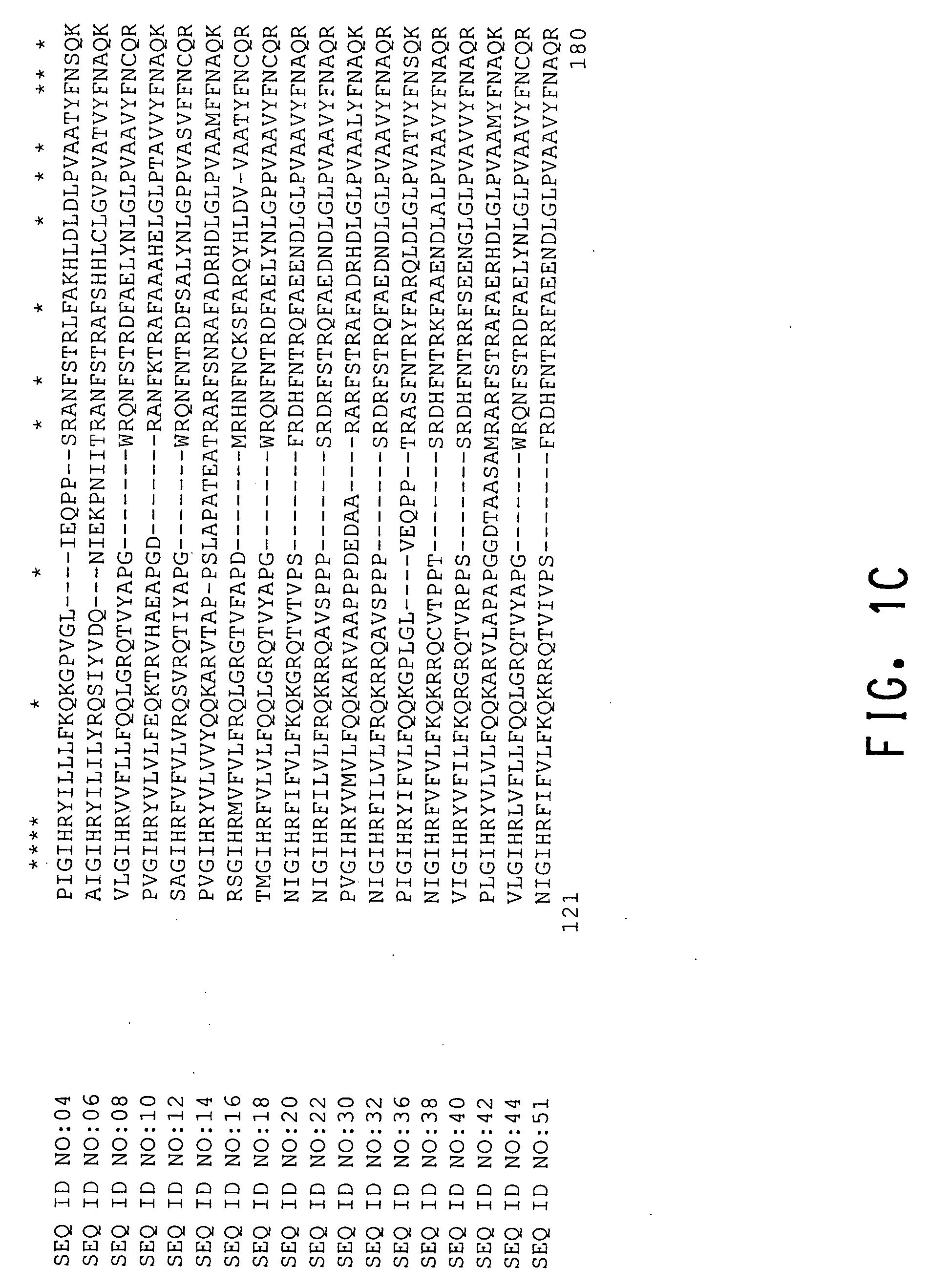Floral development genes
a technology of floral development and genes, applied in the field of plant molecular biology, can solve the problem of little information about how plants coordinate the activities
- Summary
- Abstract
- Description
- Claims
- Application Information
AI Technical Summary
Benefits of technology
Problems solved by technology
Method used
Image
Examples
example 1
Composition of cDNA Libraries; Isolation and Sequencing of cDNA Clones
[0089] cDNA libraries representing mRNAs from various Peruvian lily (Alstroemeria caryophylla), balsam pear (Momordica charantia), garden balsam (Impatiens balsamia), corn (Zea mays), rice (Oryza sativa), soybean (Glycine max), and wheat (Triticum aestivum) tissues were prepared. The characteristics of the libraries are described below. Corn developmental stages are explained in the publication “How a corn plant develops” from the Iowa State University Coop. Ext. Service Special Report No. 48 reprinted June 1993.
TABLE 2cDNA Libraries from Peruvian Lily, Balsam Pear, Garden Balsam,Corn, Rice, Soybean, and WheatLibraryTissueClonecbn10Corn Developing Kernel (Embryo and Endosperm);cbn10.pk0052.f510 Days After Pollinationcbn2Corn Developing Kernel Two Days After Pollinationcbn2.pk0035.f12cc71se-bCorn Callus Type II Tissue, Somatic Embryo Formedcc71se-b.pk0003.h10cco1nCorn Cob of 67 Day Old Plants Grown in Greencco1n...
example 2
Identification of cDNA Clones
[0095] cDNA clones encoding floral development proteins were identified by conducting BLAST (Basic Local Alignment Search Tool; Altschul et al. (1993) J. Mol. Biol. 215:403-410; see also the explanation of the BLAST alogarithm on the world wide web site for the National Center for Biotechnology Information at the National Library of Medicine of the National Institutes of Health) searches for similarity to sequences contained in the BLAST “nr” database (comprising all non-redundant GenBank CDS translations, sequences derived from the 3-dimensional structure Brookhaven Protein Data Bank, the last major release of the SWISS-PROT protein sequence database, EMBL, and DDBJ databases). The cDNA sequences obtained in Example 1 were analyzed for similarity to all publicly available DNA sequences contained in the “nr” database using the BLASTN algorithm provided by the National Center for Biotechnology Information (NCBI). The DNA sequences were translated in all ...
example 3
Characterization of cDNA Clones Encoding Flowering Locus T (FT) Homologs
[0097] The BLASTX search using the EST sequences from clones listed in Table 3 revealed similarity of the polypeptides encoded by the cDNAs to FT and its homologs from Citrus unshiu (NCBI GenBank Identifier (GI) No. 4903139), Arabidopsis thaliana (NCBI GI Nos. 5002246 and 2190540), Oryza sativa (NCBI GI Nos. 5360178 and 5360180) and Nicotiana tabacum (NCBI GI No. 5453314). Shown in Table 3 are the BLAST results for individual ESTs (“EST”), the sequences of the entire cDNA inserts comprising the indicated cDNA clones (“FIS”), the sequences of contigs assembled from two or more ESTs (“Contig”), sequences of contigs assembled from an FIS and one or more ESTs (“Contig*”), or sequences encoding an entire protein derived from an FIS, a contig, or an FIS and PCR fragment sequence (“CGS”):
TABLE 3BLAST Results for Sequences Encoding PolypeptidesHomologous to Flowering Locus T (FT) ProteinBLAST ResultsCloneStatusNCBI G...
PUM
| Property | Measurement | Unit |
|---|---|---|
| Fraction | aaaaa | aaaaa |
| Fraction | aaaaa | aaaaa |
| Fraction | aaaaa | aaaaa |
Abstract
Description
Claims
Application Information
 Login to View More
Login to View More - R&D
- Intellectual Property
- Life Sciences
- Materials
- Tech Scout
- Unparalleled Data Quality
- Higher Quality Content
- 60% Fewer Hallucinations
Browse by: Latest US Patents, China's latest patents, Technical Efficacy Thesaurus, Application Domain, Technology Topic, Popular Technical Reports.
© 2025 PatSnap. All rights reserved.Legal|Privacy policy|Modern Slavery Act Transparency Statement|Sitemap|About US| Contact US: help@patsnap.com



